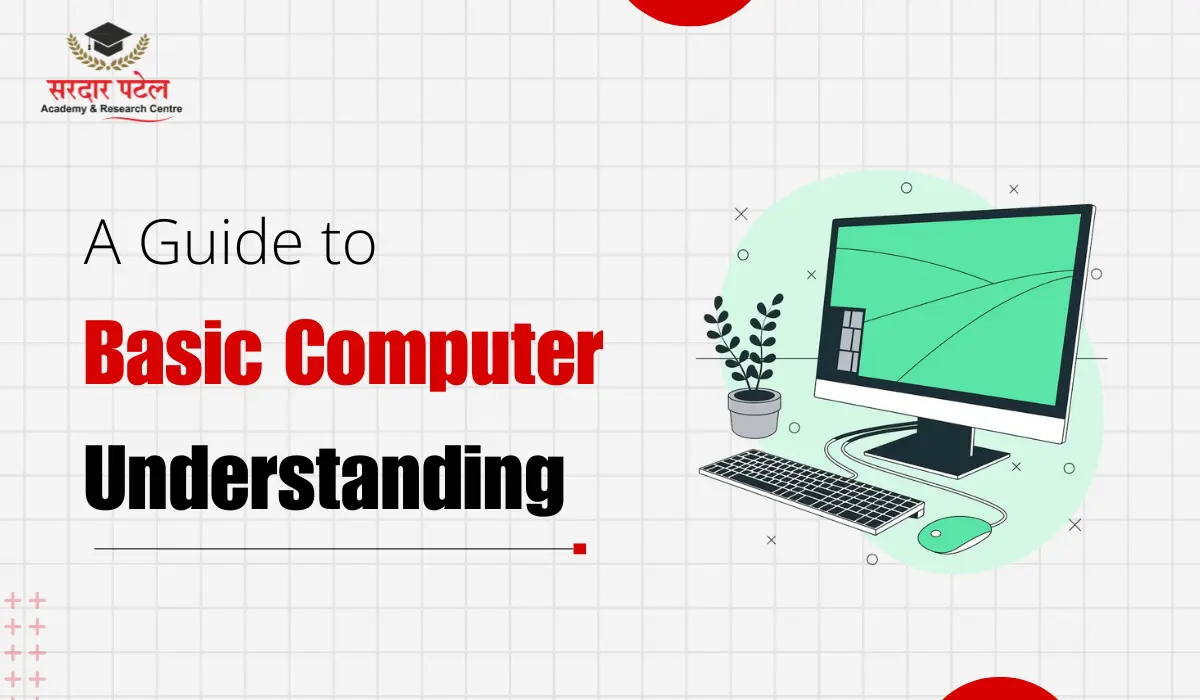
These days, computers have become a vital part of life. They are everywhere, from the phones in our pockets to the massive machines in offices and schools. It's important to know a few basics so you can at least start using computers. This blog will be a guide to the basics of computers; I will be breaking down complicated terms into easy words.
A computer could be very simply defined as an electronic data processing and task-executing machine that is fed some instructions. It can do many jobs like storing information, running software applications, browsing the internet, playing videos, and so on. A computer is basically dependent on a set series of steps to read the input data (like what you type) and provide the output (like showing the text on the screen).
There are computers in every shape and size. Some are portable, such as laptops, while others are placed inside one entity, the desktop. Tablets and smartphones, too, are considered under the category of computers as they perform similar functions yet are in compact form.
A computer consists of many vital components that work together to enable the machine to function. Majorly, it has two important setups: software and hardware.
Hardware components of computers are all tangible parts you can look at and touch. These are the monitor (screen), the keyboard, a mouse, the motherboard, and storage drives such as hard disks. Examples of software include operating systems, for example, Windows or macOS programs, Microsoft Word applications, browsers, and so on.
The sequence of operations for the functioning of a computer is rather elementary. First, it receives input from the user. Input may arise from typing on the keyboard, clicking the mouse, or touching the screen. The central processing unit (CPU) processes input, along with the software, to accomplish the task intended. Output such as text displayed on a screen or a document that is printed is fashioned.
As a case, while a character is typed into a word processor, the computer will process the keystroke and display the corresponding letter on the screen. The software manages the complexities of formatting the documents, saving them in your file, and so on.
An operating system is a collection of software that manages all the hardware and other software on a computer. It acts as the mediator between the user and the computer hardware. Windows, Mac OS, and Linux are the most influential OSs. Moreover, the OS of mobile devices is Android and iOS.
The operating system helps the computer perform certain functions: opening and closing programs, managing files, controlling hardware like printers and cameras, and making sure it runs smoothly. It is also the interface that the user interacts with-that is, items like the desktop, icons, and menus.
While it is so that the operating system performs functions basic to the computer, applications are the programs that do specific things for the user to make the computer useful. It could be productivity applications such as word processing programs (like Microsoft Word), web browsers (like Google Chrome), media players, games, or educational programs.
Every time an application is opened, it works above the operating system. For instance, when an Internet browser is launched, the operating system runs the program and gives it access to the hardware (like the internet connection), so the user can execute web browsing functions. Each function of the application is designed to accomplish particular tasks, and, therefore, diverse software must be installed for diverse tasks.
It is one of the foremost capabilities of the computer that contributes to its power: that is, interlinking up, that is, allowing for communication with other computers and accessing information through global networks. The internet permits an individual access to browse websites, check emails, watch videos, and communicate with people historically across the globe.
The devices with internet capability include computers, smartphones, and tablets, with a method of connection that may be either Wi-Fi or wired through an Ethernet cable. Browsers, such as Google Chrome or Firefox, allow you to access the World Wide Web and to navigate any website. Apps help in assisting with other online activities, such as social media and online shopping.
Whatever the data may be, be it a document, photo, video, or software, every computer needs a way to store that data. This is possible through storage devices. Modern computers generally use hard disk drives (HDDs) or, sometimes, solid-state drives (SSDs) for storage. These drives house the operating system, application, and your files.
Cloud storage programs such as Google Drive, Dropbox, or iCloud allow many people to store and share data over the Internet. Cloud storage has one key advantage: File access is generally device-independent if you are secure with the logins.
No doubt, computers need maintenance and taking care of like every other tool in order to function. One of the major activities in maintenance is ensuring that your computer is armed with the latest security software for protection against viruses and malware. Besides, regular cleaning of files and running management of storage space may enhance the operation of the computer.
Don't click suspicious links or download files from bad sources, as they could harbor malware. Also, it can be a good idea to have an external device or a cloud storage place to store important files for the opportunity against loss.
We have known that computers are tools that transform the way we live and work. Understanding the basics of how they work gives you better equipment to use them. But more and more time is spent on the computer. The more comfortable you are, the better it gets. Keep going and learning different things to unleash even more possibilities with technology.
No FAQs available.